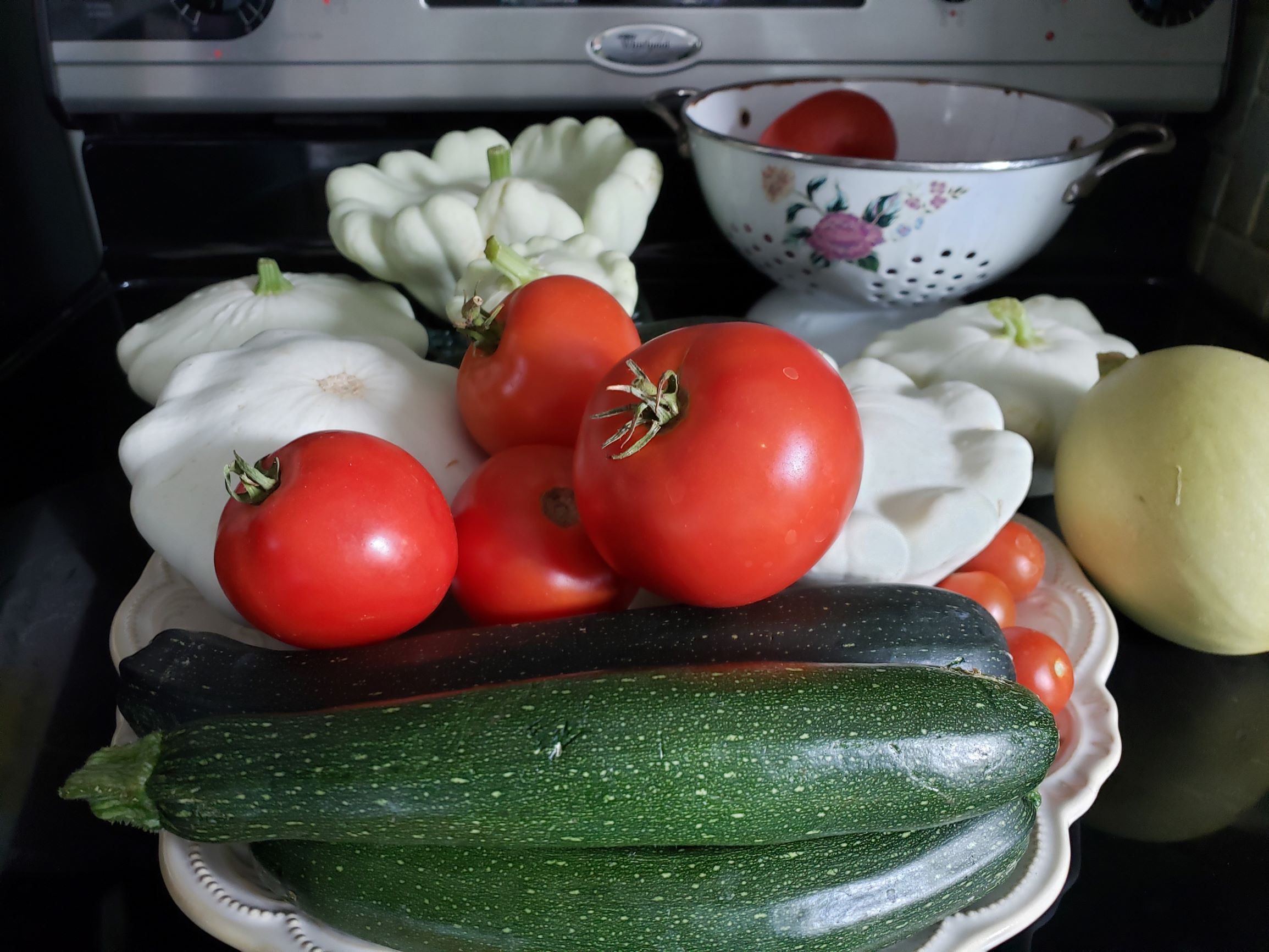The Brain Injury Hope Foundation recommends that you please consult your physician for all medical advice. And please remember, the statements in this blog post are not intended to diagnose, treat, cure or prevent any disease. Brain Injury Hope Foundation, its representatives and officers have not verified and do not condone any opinions or recommendations contained herein and are not responsible or liable related thereto.

By Eliza Marie Somers
A diet that includes a variety of vegetables and uses meat as “condiments” is recommended by the panel of experts at the BIHF Survivor Series on nutrition.
What’s for dinner? That simple three-word question can create feelings of anxiety for a survivor of a traumatic brain injury.
Think about all the actions it takes to make nutritious meals — from deciding what to cook, to gathering the food, to prepping the food, to actually cooking the meal, to cleaning up — and that can make an mTBI survivor turn to a bowl of cereal for dinner.
The Brain Injury Hope Foundation Survivor Series addressed this topic with “Brain Foods & Nutrition Tips for TBI Survivors: Eat To Thrive” on Aug. 14, 2020, via Zoom with a panel of two nutrition specialist – Jess Sorci and Jessica Bauer – and retired chiropractor and brain injury survivor – Richard Garde.
NOTE: This is the second nutrition panel presented by the BIHF. Here is a link to the June 2018 event, which contains additional information and resources.
“It’s about finding various ways to increase your vitality,” said Garde, who also calls himself a Brain Injury Warrior. “There are so many different dietary plans out there … but the key is to increase colorful foods in your life and reduce sugar and toxins.”
Bauer said to treat meat as a condiment and to focus on plant foods to help your brain after an mTBI.
“After a head injury it’s hard to find the time to handle it all – to grocery shop to cook…” she said. “Focus on plant foods and find pure sources of animal protein. The QUALITY of the food is just as important.”
- Food for Thought Recipes and Shopping List provided by Kristina Martinez, MSOT, OTR/L, Certified Health Coach and Kristi Staniszewski at OT Plus
- Brain Injury Nourishing Recipes
- Avocado Chocolate Truffle Recipe
- Brain Power Smoothie
And as far as what diet protocol to follow be it Keto, Paleo or Mediterranean to name a few, Bauer said, “If it causes stress or guilt it is more detrimental” than helpful.
Sorci looks at the individual and what they can do to help clients find a viable eating plan.
“I look for a diet that is sustainable for that person,” Sorci said. “I don’t want to put someone on strict diet after a TBI, so we create small tweaks that they can and will follow. We look at their energy level, too.”
Some of the small tweaks Sorci recommends are adding good healthy fats, more plant foods and looking at the quality of the food. She also incorporates supplements and looks at a person’s digestion to make sure it is working properly.
“A brain injury causes a cascade of inflammation, so we start with reducing the inflammation,” Sorci said.
Supplements Sorci recommends to reduce inflammation include turmeric, fish oils, and glutathione. Bauer likes to use cinnamon to regulate blood sugar, along with green powder, spirulina (a blue-green algae) and turmeric.
“Before you plant a garden you have to clear the weeds,” Garde said. “If you have lots of sugar and alcohol in your diet these create inflammation.” He also said look for toxic chemicals in your everyday products – shampoo, soap, makeup, cleaning products, even the containers you keep food and beverages in as plastics are quite harmful.
“You have to get your diet clean before adding supplements,” he said
Healthy Fats
With more than 60 percent of your brain consisting of fat, adding quality fat to your diet is crucial as Bauer noted. Some fats to add include walnuts, avocados, and fatty fish.
There is a balance between fats and some research suggest that consuming a high ratio of omega-6 to omega-3 fatty acids is thought to contribute to inflammation and chronic disease.
“The American diet includes high levels of omega-6s (corn oil, sunflower oil, soybean oil and cottonseed oil), so it’s important to build up omega-3 fats,” Garde said.
- Here is a link to a story on Optimizing Your Omega-6 and Omega-3 fats.
- Here are two links to stories about the best foods for Omega-6 and Omega-3 fats.
Just picking which fats to add to your diet is a complicated issue as it takes a proper balance, then add in Omega-9s and you can see how it can overwhelm a mTBI survivor.
So what’s the best tact? All the panelists agreed that variety in foods is the best policy.
Sugar Blues
Do you crave sugar? It’s a common yearning in mTBI survivors because the brain runs on glucose as its primary source of energy and the brain is the most energy-demanding organ in the body, according to the Harvard Mahoney Neuroscience Institute.
After an mTBI, glucose has a hard time reaching the brain’s nerve cells, thus causing a craving for sugar.

Richard Garde, one of the three panelist, reminds mTBI survivors to limit sugar because it is just as addictive as cocaine.
“Sugar is more addictive than cocaine or heroin,” Garde said.
Sugar releases opioids and dopamine in the body thus creating an addiction according to this Philadelphia Inquirer story.
“An injured brain craves sugar” Garde continued. “Sugar creates inflammation and pain. Getting off sugar is one of the hardest things to do. Start treating sugar like a recreational drug — very little and very far apart.”
Sorci recommended adding dark chocolate and quality fruits to your diet to help with the sugar cravings. Garde suggested cacao – the bitter pure chocolate – because it is packed with iron, magnesium and antioxidants, so the higher number of cacao in the chocolate you eat the better.
“It comes down to quality,” Bauer said. “Read the labels. Make food at home and use less processed foods.”
Wheat, Gluten and Organic Foods
When asked about gluten and if mTBI survivors should go gluten free all the panelist agreed that it’s not the wheat that is bad it’s what is on the wheat and how it is grown in the United States that in turn makes gluten intolerable to many people.
“I don’t think it is the wheat itself that is inflammatory,” Sorci said. “It’s what we do with the wheat. (Farmers) put RoundUp (glyphosate) on wheat.”
And glyphosate, the world’s most widely used pesticide, has been showing up in trace amounts in our food as per this article.

Jess Sorci recommends organic foods to combat pesticides in your diet.
So again it comes down to quality and each panelist recommended purchasing organic foods, if you can afford it. The best practice is to know the “Dirty Dozen” foods and purchase the organic products. Along with knowing the “Clean 15” foods, so you can save your money for the Dirty Dozen.
Picking Protein
Garde stressed eating the food chain when it comes to choosing your protein. “You eat what it eats,” he said. “The best value is beef from grass pastures versus food lots. Look how the animals are raised and what they eat.” He also suggested eating game, such as deer.
Sorci likes adding eggs to a survivor’s diet. “Eggs are a great source of protein and choline, which is good for cognitive function. Plus they are easy.”
If you have a few eggs in your fridge and don’t know if they are still good to eat, you can do the “float test.” Gently drop the egg in a glass of water and if it floats to the top, it is bad. Here is a story with a few other ways to check if your eggs are OK to eat.
Don’t forget chicken and fatty fish as good sources of protein, Bauer said. “Fatty fish such as salmon, sardines, Arctic char, and wild cod are good choices.”
All agreed to stay away from those imitation burgers because they are mostly soybean based, but did suggest bean burgers as a good alternative to beef.
Planning meals is a concern for many survivors, and Bauer suggested picking three different proteins for the week, along with three varieties of vegetables and to shop seasonally to save on money.
Garde relies on smoothies to supplement his meals as you can add quality protein to smoothies along with sneaking in some green vegetables, such as spinach, which has a mild flavor, and MCT oil. “MCT oil supports the brain,” he said. “It is digested quicker than other fats.”
“Your brain fires better on MCT oil,” Bauer explained. “We were sold a story that fats were bad for us, but our brains rely on fats. It’s a smart food.”
- Some more insight from Richard Garde, retired chiropractor and mTBI survivor.
- Feed your Body Feed Your Brain
- Brain Foods
- What are Carbohydrates
Nuts are also a staple for mTBI survivors because they are easily accessible and can be packed in a little container to take with you on those trips to doctor appointments or other errands.
“No one diet is going to sustain you,” Sorci said. “The Keto diet has advantages for the brain but it’s not sustainable. We need to be eating whole foods, lean proteins, fruits and veggies.
“The important thing with a brain injury is it’s a long road,” Sorci continued. “There will be ups and downs, and frustration. It’s OK to not be perfect. Remember you are slowly making progress and that is what you need to focus on. Don’t get frustrated with the process. Be easy on yourself.”
Garde agreed. “Be kind to yourself. No one chose this journey, but it’s here. There will be times when it is incredibly frustrating. Realize there is a new you and that new you has to be nurtured to grow and bloom where you are.”
To Reach Our Panelists
- Richard Garde
RichardEGarde@gmail.com - Jess Sorci-Galecki, MNT
jess@vitalsourcenutrition.com
www.vitalsourcenutrition.com
720-819-6490 - Jessica Bauer, MS, CNS
jessica.bauer@mygoodfarma.com
P: 720-907-7700
F: 720-907-7711
Facebook: @mygoodfarma
Instagram: @good_farma_


[…] Eat to Thrive After a Brain Injury […]